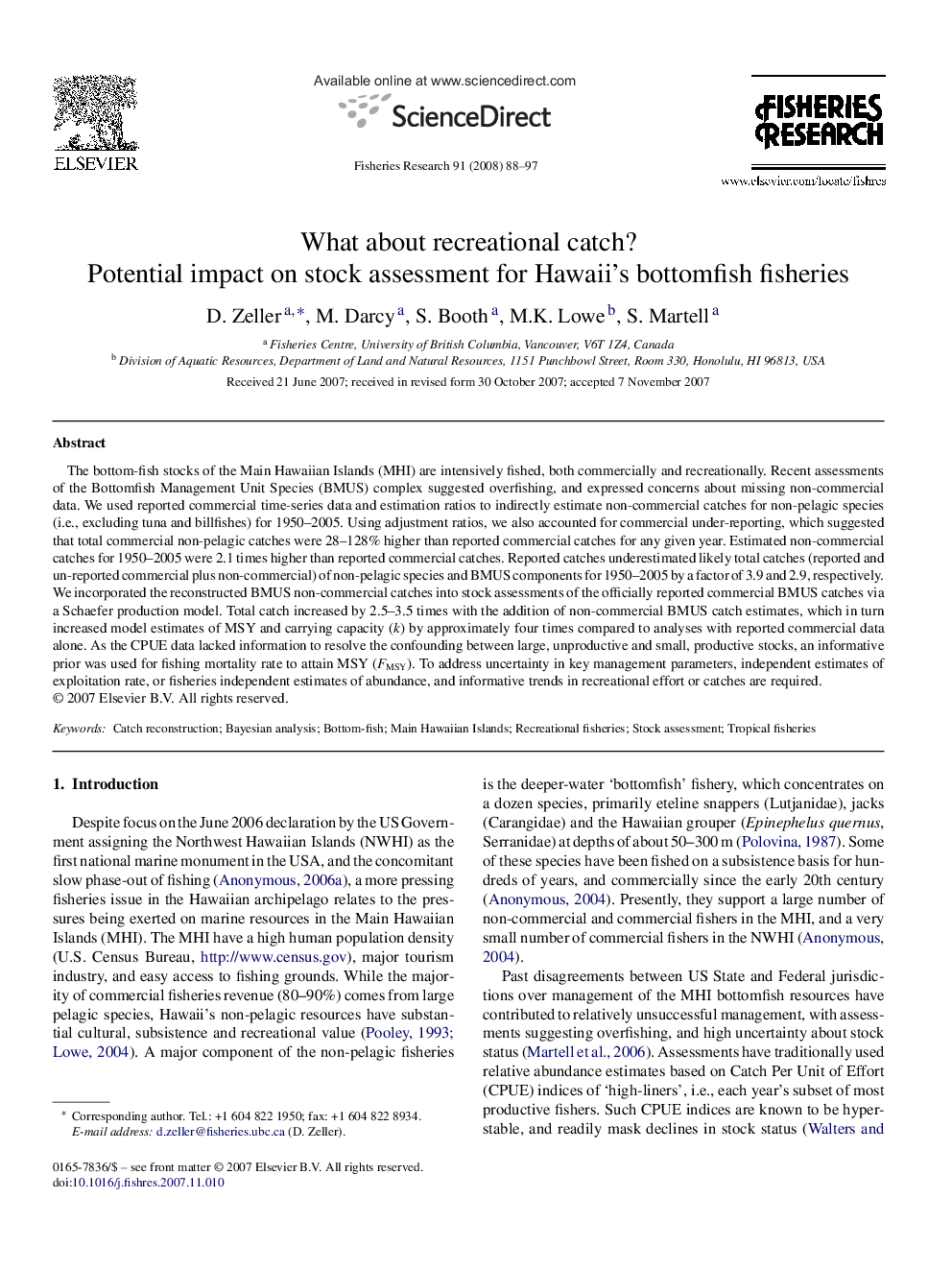| Article ID | Journal | Published Year | Pages | File Type |
|---|---|---|---|---|
| 4544414 | Fisheries Research | 2008 | 10 Pages |
The bottom-fish stocks of the Main Hawaiian Islands (MHI) are intensively fished, both commercially and recreationally. Recent assessments of the Bottomfish Management Unit Species (BMUS) complex suggested overfishing, and expressed concerns about missing non-commercial data. We used reported commercial time-series data and estimation ratios to indirectly estimate non-commercial catches for non-pelagic species (i.e., excluding tuna and billfishes) for 1950–2005. Using adjustment ratios, we also accounted for commercial under-reporting, which suggested that total commercial non-pelagic catches were 28–128% higher than reported commercial catches for any given year. Estimated non-commercial catches for 1950–2005 were 2.1 times higher than reported commercial catches. Reported catches underestimated likely total catches (reported and un-reported commercial plus non-commercial) of non-pelagic species and BMUS components for 1950–2005 by a factor of 3.9 and 2.9, respectively. We incorporated the reconstructed BMUS non-commercial catches into stock assessments of the officially reported commercial BMUS catches via a Schaefer production model. Total catch increased by 2.5–3.5 times with the addition of non-commercial BMUS catch estimates, which in turn increased model estimates of MSY and carrying capacity (k) by approximately four times compared to analyses with reported commercial data alone. As the CPUE data lacked information to resolve the confounding between large, unproductive and small, productive stocks, an informative prior was used for fishing mortality rate to attain MSY (FMSY). To address uncertainty in key management parameters, independent estimates of exploitation rate, or fisheries independent estimates of abundance, and informative trends in recreational effort or catches are required.
